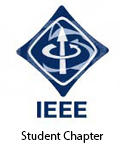Four faculty members in EECS celebrate retirement this summer
June 19, 2015 – Computer science’s Lee Coraor and Don Heller and electrical engineering’s Jack Mitchell and Raj Mittra are starting a new chapter in their lives: retirement.
Lee Coraor, associate professor and director of academic affairs in the Department of Computer Science, is retiring in August. He has had an extremely active role in graduate and undergraduate education since joining Penn State in 1980. This spring he was honored with the Penn State Engineering Alumni Society’s (PSEAS) Outstanding Advising Award. In 1995 he received the PSEAS Premier Teaching Award and has served as a scholar’s adviser since 1988. He was heavily involved in the creation of the computer engineering program at Penn State in the mid-1980s and he served on the University Senate for 16 years including serving as chair of the senate in 2009-10.
While at Penn State, Coraor also investigated the use of field programmable gate arrays and was co-leader of a team developing the SmartDIMM a computing in memory architecture, which is useful in accelerating a variety of computational tasks, as well as serving as a platform for investigating system-on-a-chip designs. His research includes computing in memory architecture, which is useful in accelerating a variety of computational tasks, as well as serving as a platform for investigating system-on-a-chip designs. Coraor co-supervised work that examined the design of a decoupled architecture for use in a Reduced Instruction Set Computer environment. He was also co-principal investigator on a NASA funded project developing the commercial electrophoresis program in space, as well as assisting on a second NASA funded project implementing a real-time obstacle detection system for use on super sonic transports.
Don Heller, associate professor of computer science and engineering, is retiring in June. His career at Penn State began in 1975 when he was hired as an assistant professor of computer science. After eight years, he left academia to work in industry for Shell Oil Company. Following 10 years at Shell, Heller served as a research scientist at Rice University in Houston, then as a senior scientist in applied mathematical sciences at the U.S. Department of Energy’s Ames Laboratory in Iowa. During his time in Iowa he also worked as an adjunct associate professor of computer science at Iowa State University. He returned to Penn State in 2001.
Heller’s research enterprises are diverse, from his work at Iowa State and Penn State, focusing on benchmark programs, operating system components, and user-level tools for performance measurement and analysis, to his time at Shell, focusing on simulation, specification, selection and application of parallel computers for geophysics, and petroleum reservoir modeling. He was instrumental in building the nCUBE hypercube system, which was placed into operational use at Shell in December 1987 and has been recognized as an important contributor to the company's exploration community.
 Jack Mitchell has been truly dedicated to his alma mater. He earned his bachelor’s, master’s, and doctoral degrees in electrical engineering at Penn State and has been a part of the faculty since 1980. Mitchell’s devotion to his students has been recognized a number of times: he has received the PSEAS Outstanding Advising Award, the Schlumberger Outstanding Teaching Award, and the PSEAS Outstanding Teaching Award. He has served as interim department head of electrical engineering and interim associate dean for undergraduate programs in the College of Engineering.
Jack Mitchell has been truly dedicated to his alma mater. He earned his bachelor’s, master’s, and doctoral degrees in electrical engineering at Penn State and has been a part of the faculty since 1980. Mitchell’s devotion to his students has been recognized a number of times: he has received the PSEAS Outstanding Advising Award, the Schlumberger Outstanding Teaching Award, and the PSEAS Outstanding Teaching Award. He has served as interim department head of electrical engineering and interim associate dean for undergraduate programs in the College of Engineering.
Mitchell taught primarily in the areas of electronic circuits and design, and space sciences. His research focused on electrical properties and processes of the middle atmosphere. Mitchell was involved with the NASA National Space Grant College Program, serving as the engineering representative on the internal advisory committee and as the co-director of the Significant Opportunities in Atmospheric Achievement Program.
 Raj Mittra, professor of electrical engineering and director of the Electromagnetic Communication Laboratory, is retiring at the end of June. He joined Penn State in 1996, after working as a professor in electrical and computer engineering at the University of Illinois. Mittra is a fellow of the Institute of Electrical and Electronics Engineers and was awarded their 2011 James H. Mulligan, Jr. Medal, an honor that recognizes contributions made to education, engineering research, and research training in electromagnetic communication.
Raj Mittra, professor of electrical engineering and director of the Electromagnetic Communication Laboratory, is retiring at the end of June. He joined Penn State in 1996, after working as a professor in electrical and computer engineering at the University of Illinois. Mittra is a fellow of the Institute of Electrical and Electronics Engineers and was awarded their 2011 James H. Mulligan, Jr. Medal, an honor that recognizes contributions made to education, engineering research, and research training in electromagnetic communication.
Mittra has published approximately 970 journal and symposium papers and more than 40 books or book chapters on various topics related to electromagnetics, antennas, microwaves, and electronic packaging. His areas of expertise include computational electromagnetic, electromagnetic interference/compatibility, electromagnetic modeling and simulation of electronic packages, radio frequency and wireless systems analysis and design, and communication antenna design.


